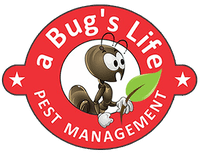As a dog owner, you’re likely aware of the countless hazards that can pose a threat to your beloved pet. From toxic foods to harmful plants, it’s crucial to keep an eye on what your dog is getting into. One such danger that often goes overlooked is the risk of cane toad poisoning. But what should you do if your dog licks a cane toad? This guide will provide you with essential information on how to respond effectively.
Understanding Cane Toads and Their Threat
Cane toads, also known as Bufo, Marine, or Giant Toads, are large amphibians native to Central and South America. They were introduced in various parts of the world, including Florida and Hawaii in the United States and Northern Australia, as a means of pest control for sugar cane crops. However, they have since become an invasive species causing significant ecological damage.
The real danger lies in their skin glands that secrete a potent toxin called bufotoxin. When threatened or handled roughly, these glands release this toxin as a defense mechanism. Dogs can get poisoned if they lick or bite these toxic creatures.
Recognizing Symptoms of Cane Toad Poisoning
If your dog has come into contact with a cane toad, it’s crucial that you recognize the symptoms of poisoning quickly. The severity of symptoms can vary depending on the amount of toxin ingested or absorbed through the gums.
Common signs include excessive drooling or foaming at the mouth due to irritation caused by the toxin. Your pet may also paw at its mouth or appear distressed. Other symptoms may include vomiting, disorientation, dilated pupils, irregular heartbeat, difficulty breathing and seizures in severe cases.
Immediate Actions After Exposure
If you suspect that your dog has licked or bitten a cane toad, immediate action is critical. Here are some steps you should follow:
1. Remove your dog from the area to prevent further contact with the toad.
2. Using a hose, rinse your dog’s mouth out thoroughly with water for about 10 minutes. Make sure the water flow is directed away from the throat to prevent aspiration or choking.
3. Do not induce vomiting as this can cause more harm than good.
4. Contact your vet immediately, even if your pet seems fine after rinsing. Some effects of the toxin may not be immediate.
Seeking Veterinary Care
Once you’ve rinsed your dog’s mouth and contacted your vet, they will likely advise you to bring in your pet for an examination. Your vet may administer medication to control symptoms and monitor heart rate and blood pressure closely.
In severe cases, hospitalization may be required for intravenous fluid therapy or even respiratory support if breathing becomes difficult for your pet.
Preventing Cane Toad Poisoning
Prevention is always better than cure when it comes to cane toad poisoning in dogs. If you live in an area where cane toads are prevalent, consider these preventive measures:
1. Keep your dog indoors during peak cane toad activity times, which are typically dusk till dawn.
2. Regularly check outdoor areas for cane toads before letting your dog out.
3. Train your dog not to touch or pick up anything without command.
In conclusion, knowing what actions to take if your dog licks a cane toad can make all the difference in preventing serious harm or even death from cane toad poisoning. Remember that immediate action is crucial and that prevention is always the best strategy in keeping our furry friends safe from this toxic threat.
Remember: When it comes to our pets’ safety, vigilance and knowledge are our best tools!
